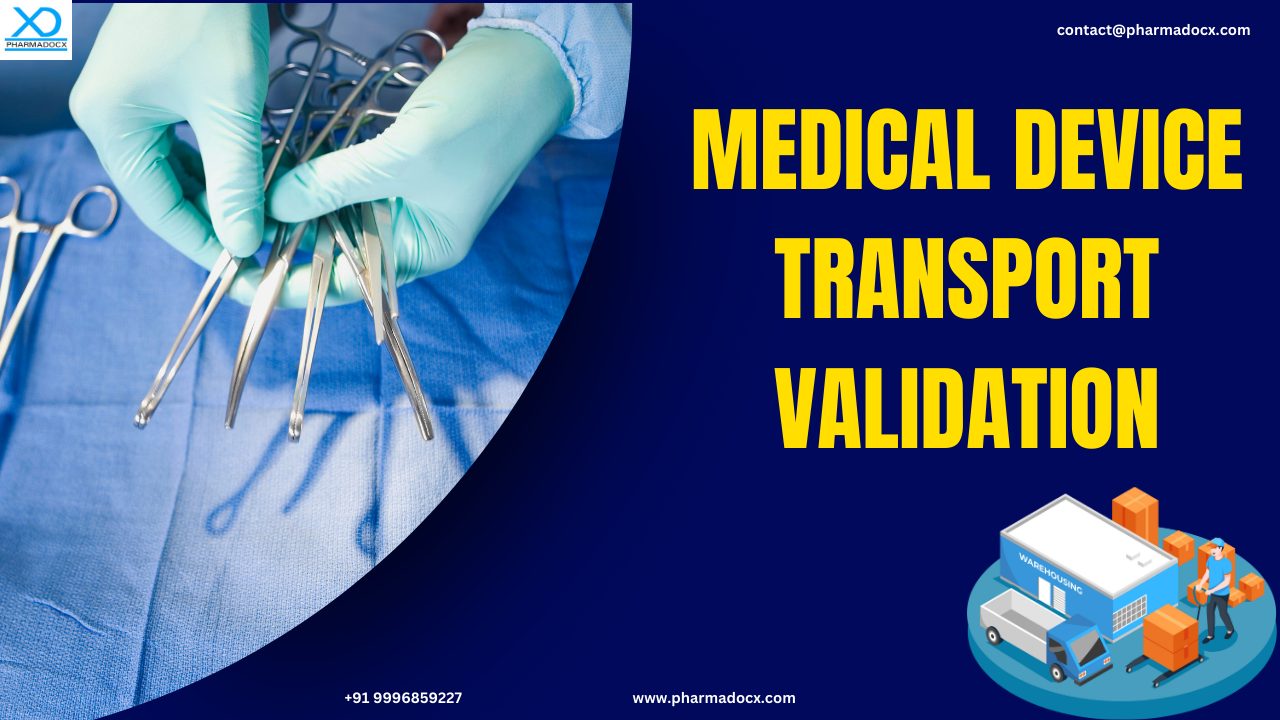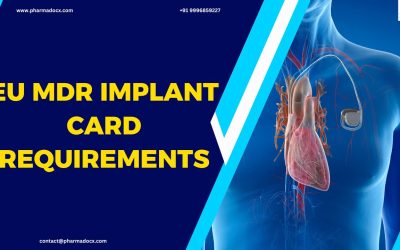Transport validation is performed to demonstrate the device will remain safe during transportation. Additionally, it ensures the device will perform as intended when they reach the end user. Hence, performing transport validation is a mandatory requirement for most regulatory bodies. In this blog, we have discussed what is medical device transport validation and the common validation tests performed. Additionally, we have highlighted the impact of transport validation on patient safety.
What is medical device transport validation?
Medical device transport validation is the process of ensuring the medical devices remain safe, sterile, and undamaged during transportation and storage. The transportation of the medical devices from the manufacturing site to the end user should not affect the physical properties of the device. Transport validation ensures the device will remain free from physical damage and biological contamination during transportation and will function as intended once it reaches the end user. Simulated environmental condition tests, such as temperature, humidity, shock, or pressure tests, are carried out. The packaging compatibility and safety are tested to check the device’s properties will not be affected during transit. Therefore, transport validation aims to demonstrate the medical device and its packaging can withstand transportation and storage conditions.
Medical device transport validation is a mandatory regulatory requirement. Transport validation ensures the device integrity will be maintained during transportation from manufacturer to end user. Moreover, by validating transport conditions, it helps reduce risks and ensure device reliability. Therefore, transport validation plays a crucial role in patient safety and device effectiveness.
6 points to keep in mind while conducting transport validation
- Factors affecting packaging integrity: Prior to conducting transport validation, temperature, humidity, shock, pressure, and any other factors that may affect the packaging integrity of the device have to be determined. These parameters will help manufacturers determine the necessary tests to be performed during transport validation.
- Packaging compatibility and safety: Manufacturers will have to determine whether the packaging material is suitable for the device and its intended use. Additionally, they will have to check whether it can protect the device from damage during transportation and storage.
- Device sterility: For sterile medical devices, manufacturers will have to assess the packaging’s ability to maintain device sterility throughout the transport and storage period.
- Shipment conditions: The mode of transportation, shipping routes, and shipping environment are some of the transport parameters to keep in mind.
- Performance integrity: Manufacturers will have to confirm the device’s performance characteristics will not be adversely affected during transportation.
- Special storage condition: Manufacturers will have to perform a stability study of the device to check whether special storage conditions will be required.
Manufacturers will have to keep the aforementioned points in mind while choosing the tests that are appropriate for their device. Real time trials are usually performed under simulated environment conditions. Thus, the manufacturers will have to plan their medical device transport validation tests by taking the aforementioned points into consideration. Additionally, they will have to keep their device properties and unique needs in mind.
Regulatory requirements for medical device transport validation
Medical devices will have to be packaged in a manner their performance, characteristics, safety, and sterility are not compromised during transport and storage. Regulatory authorities require manufacturers to mandatorily perform medical device transport validation. We have highlighted some of the major regulatory requirements:
- Medical devices will have to be packaged in a manner to minimize the risk posed by residues and contaminants to patients.
- The medical device package should retain its sterility until it is broken.
- Devices with a specific microbial state have to be packaged in a way so that they remain as they are during transport and storage. Additionally, they should remain in that state when placed in the market.
4 important roles of transport validation in medical device industry
Performing transport validation in medical device industry is a mandatory requirement. Its importance lies beyond regulatory compliance. It is beneficial for the manufacturer and the medical device company’s reputation.
- Regulatory compliance: By performing transport validation, companies can demonstrate their commitment to regulatory compliance.
- Ensuring patient safety: The main goal of medical device transport validation is ensuring the device reaches the end-user in a safe, functional, and uncompromised state.
- Identifying potential transportation-related risks: The validation process will identify and mitigate potential risks associated with transportation. Companies can prevent product damage during transportation, thus avoid product recalls. Hence, by avoiding these transportation-related risks, medical device companies can protect company reputation and retain consumer trust.
- Device integrity: Transport validation will help verify whether the device remains intact and functional during the transit from the manufacturing site till it reaches the end user.
9 common real time transport validation tests
Transport validation tests are performed to evaluate the compatibility and safety of the medical device packaging. The tests are used to confirm the device’s properties will not be affected by environmental conditions during transportation. Manufacturers will have to select appropriate tests based on parameters, such as medical device type, shipment mode, environmental conditions, and transport duration. We have provided examples of some common transport validation tests performed under simulated conditions.
- Drop Test: In this test, accidental drops are simulated. Drops tests are used to prove the package is non-breakable or that the device will suffer no damage during the accidental drop.
- Simulated transport trials: The packaged device is subjected to simulated environmental conditions that mimic real-world shipping and handling conditions, such as vibration, temperature fluctuations, and humidity changes.
- Vibration test: This test assesses the impact of vibrations on the packaged medical device during transport.
- Temperature test: Monitoring temperature variations that occur during transit to ensure the medical device remains within its specified temperature range.
- Altitude test: This test examines how low-pressure environments affect the medical device packaging. In this simulated test, the medical device is placed in a box that can handle different pressures. The air from within the box is gradually removed until the required low pressure is achieved. This condition mimics the effects of the altitude-related low-pressure environment.
- Shock test: This test focuses on evaluating the mechanical impact resistance of the device and its packaging.
- Water spray test: In this test, the top surface of the package is sprayed with water and maintained at a constant temperature. Additionally, particular surfaces of the device package are sprayed with water either intermittently or continuously. Then, the impact of the water sprayed on the package and whether it affects the device within are evaluated.
- Climatic conditions test: The medical device packaging is exposed to varying temperatures and humidity. Then, the impact of the varying climatic conditions on the packaged medical device is evaluated.
- Compression test: This test is used to evaluate the effects of stacking of packing boxes in vehicles on the packaged medical device.
Impact of transport validation on device effectiveness and patient safety
By performing transport validation, manufacturers can reduce transport-related risks and impact of these risks on packaged medical devices. Thus, they can ensure device safety, reliability, and effectiveness, thereby protecting patient health and safety.
- Environmental factors, such as temperature and humidity, can degrade materials or affect electronic components. Validation ensures devices remain safe and effective even when subjected to these environmental factors during transportation.
- Certain medical devices, such as surgical instruments and implants, have to be sterile. Improper transport conditions can compromise device sterility. Hence, transport validation is required to check the ability of the packaging to maintain device sterility during transport conditions.
- Transport validation can mitigate transport-related risks. This helps ensure the devices will remain safe and perform as intended when they reach the end user.
- If devices reach end users in damaged or compromised conditions, they may need to be recalled. Hence, medical device transport validation helps avoid product recalls and its associated costs.
- Devices are often sensitive to mechanical stress and susceptible to physical damage during transportation. Transport validation ensures the packaging is capable of withstanding shocks, vibrations, and compression without compromising the functionality and properties of the device.
Therefore, medical device transport validation plays a vital role in ensuring safe and effective medical devices reach patients. Hence, most regulatory bodies expect medical device manufacturers to perform transport validation. Navigating regulatory requirements for medical device manufacturers is a tricky task. It requires extensive regulatory knowledge and industry expertise. Email us at [email protected] or call/Whatsapp on 9996859227 to avail our validation consultation services. We at Pharmadocx Consultants will help you achieve regulatory excellence in a hassle-free manner.





